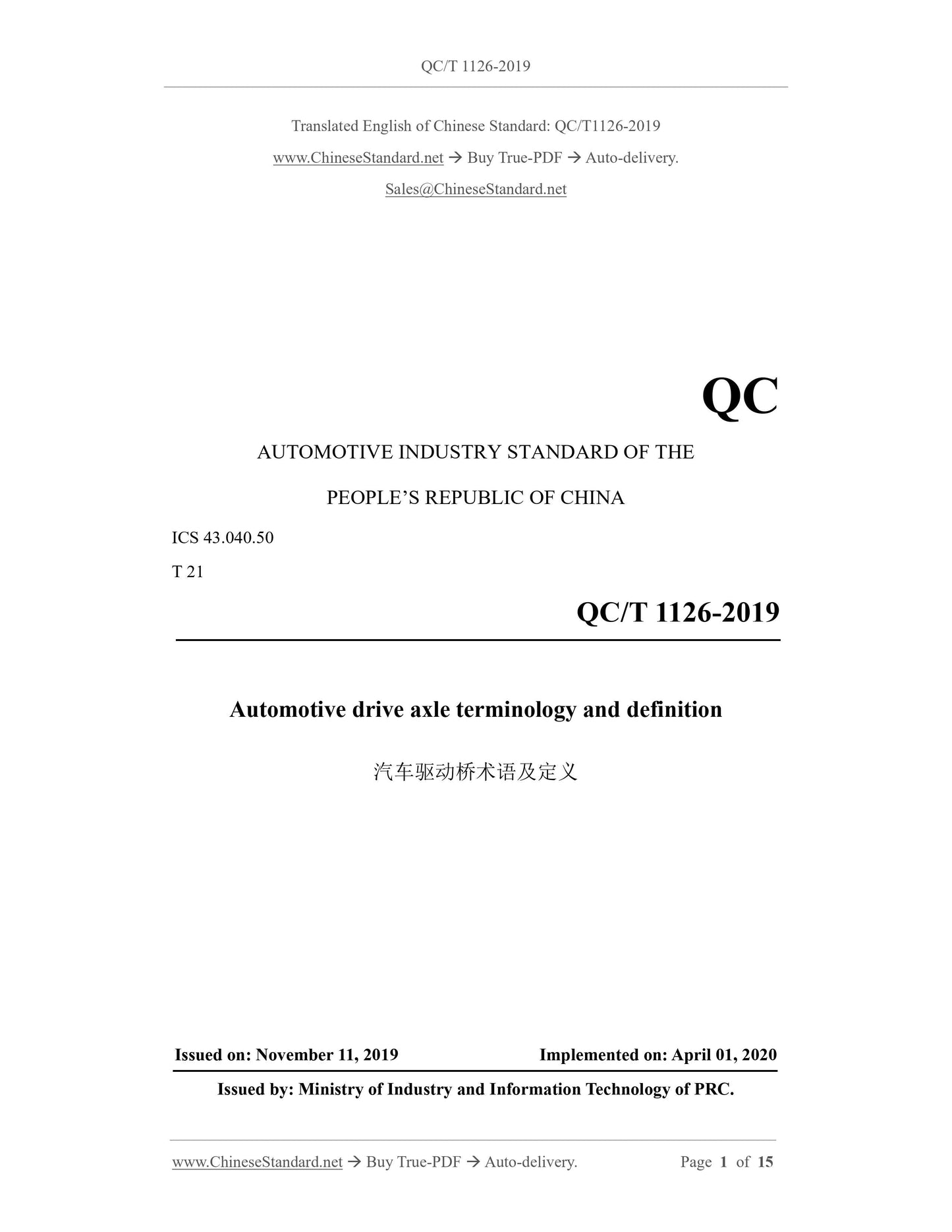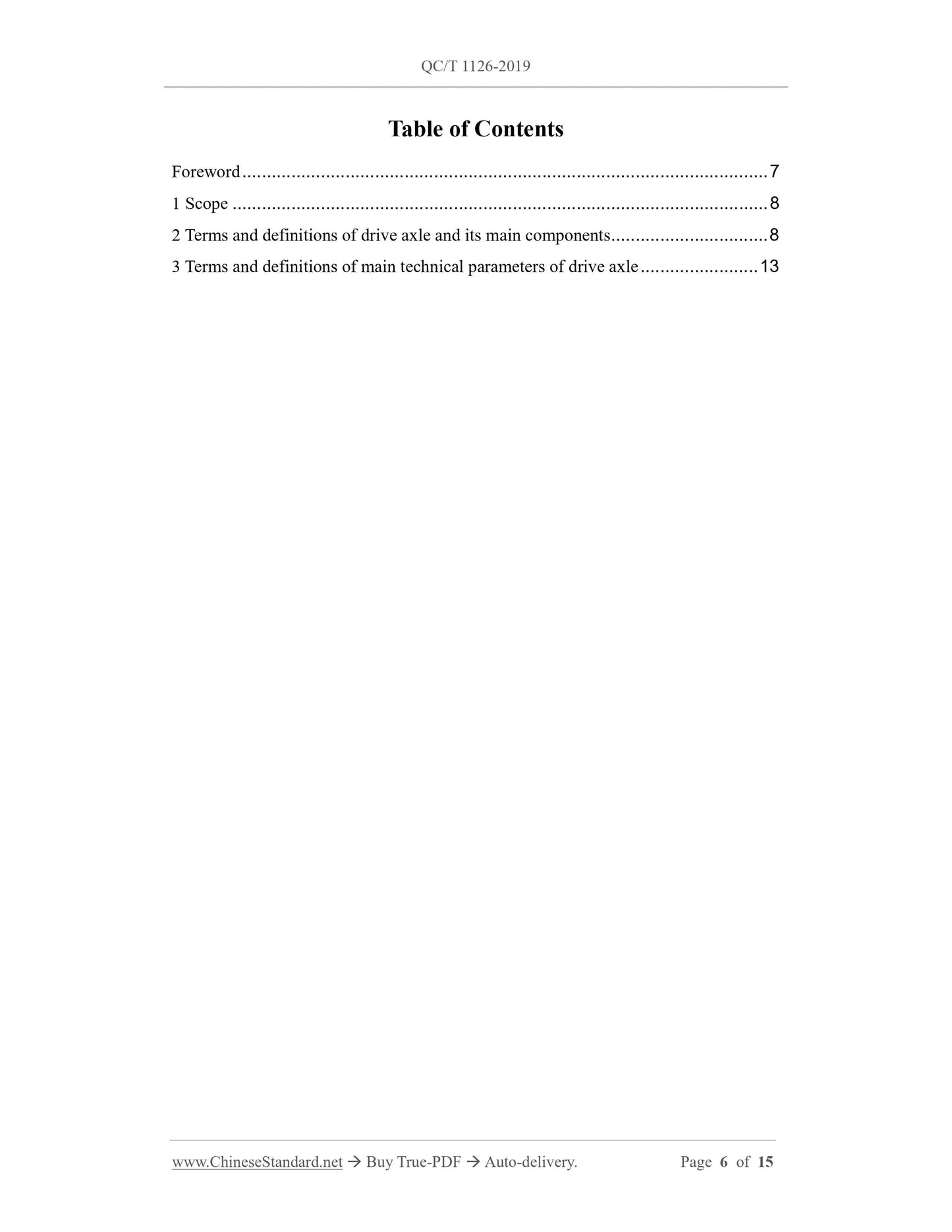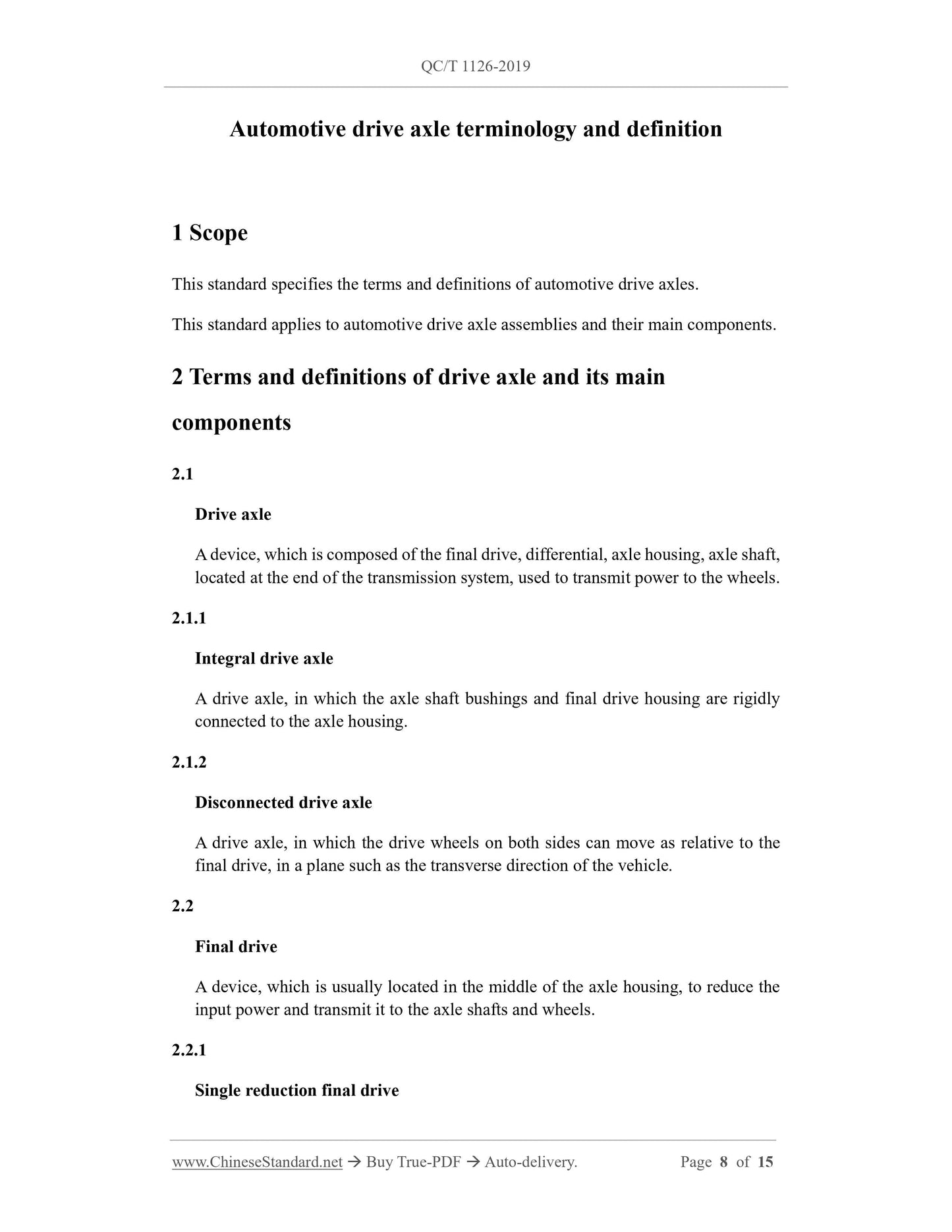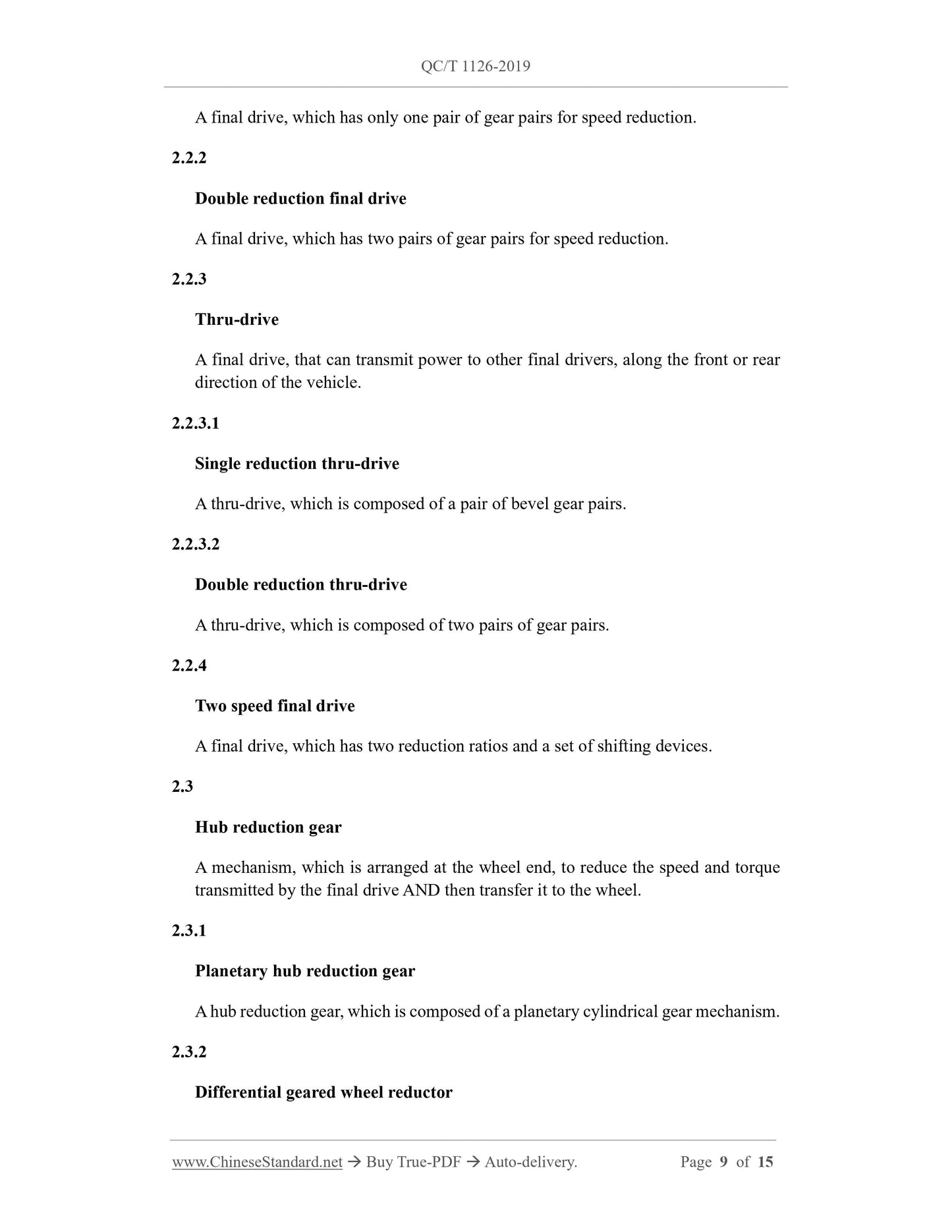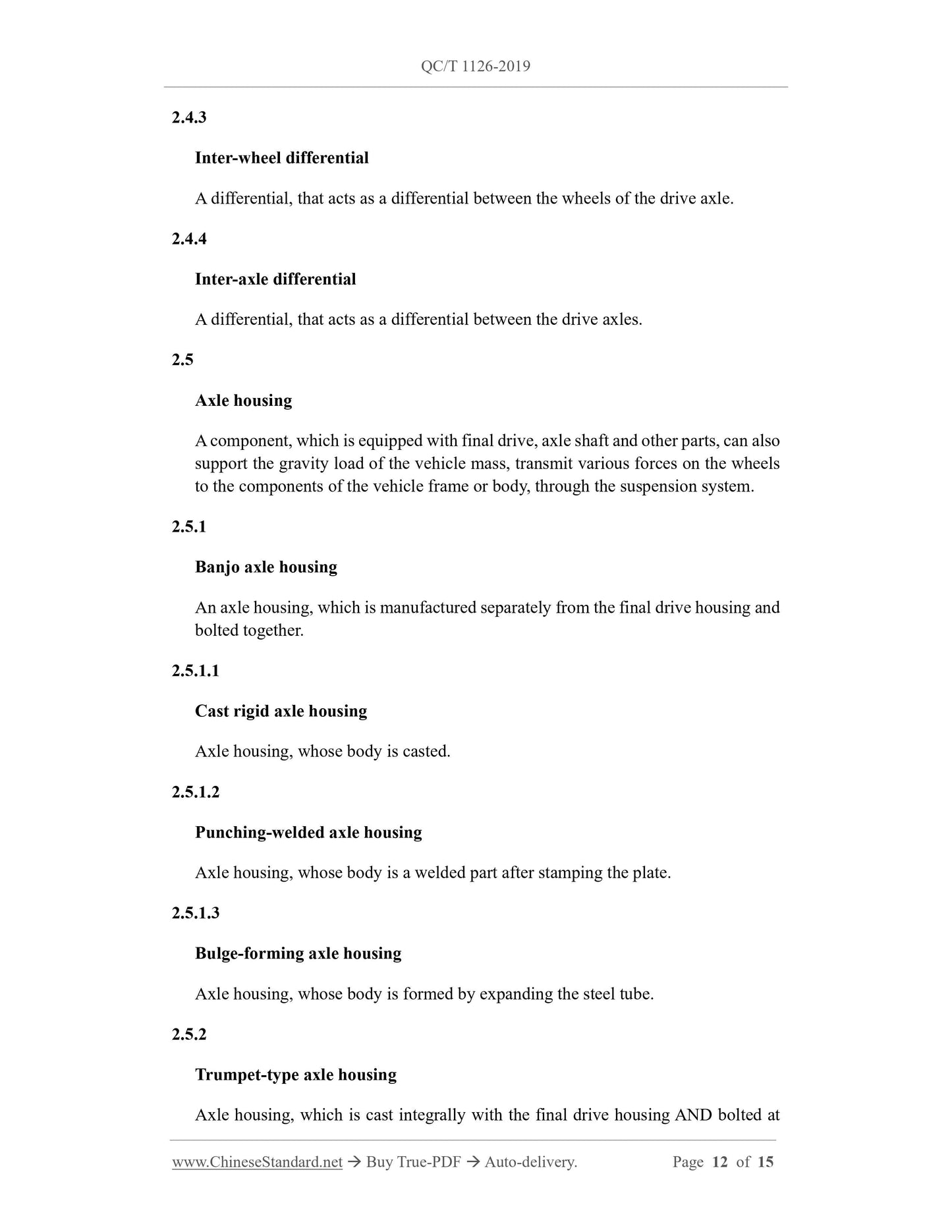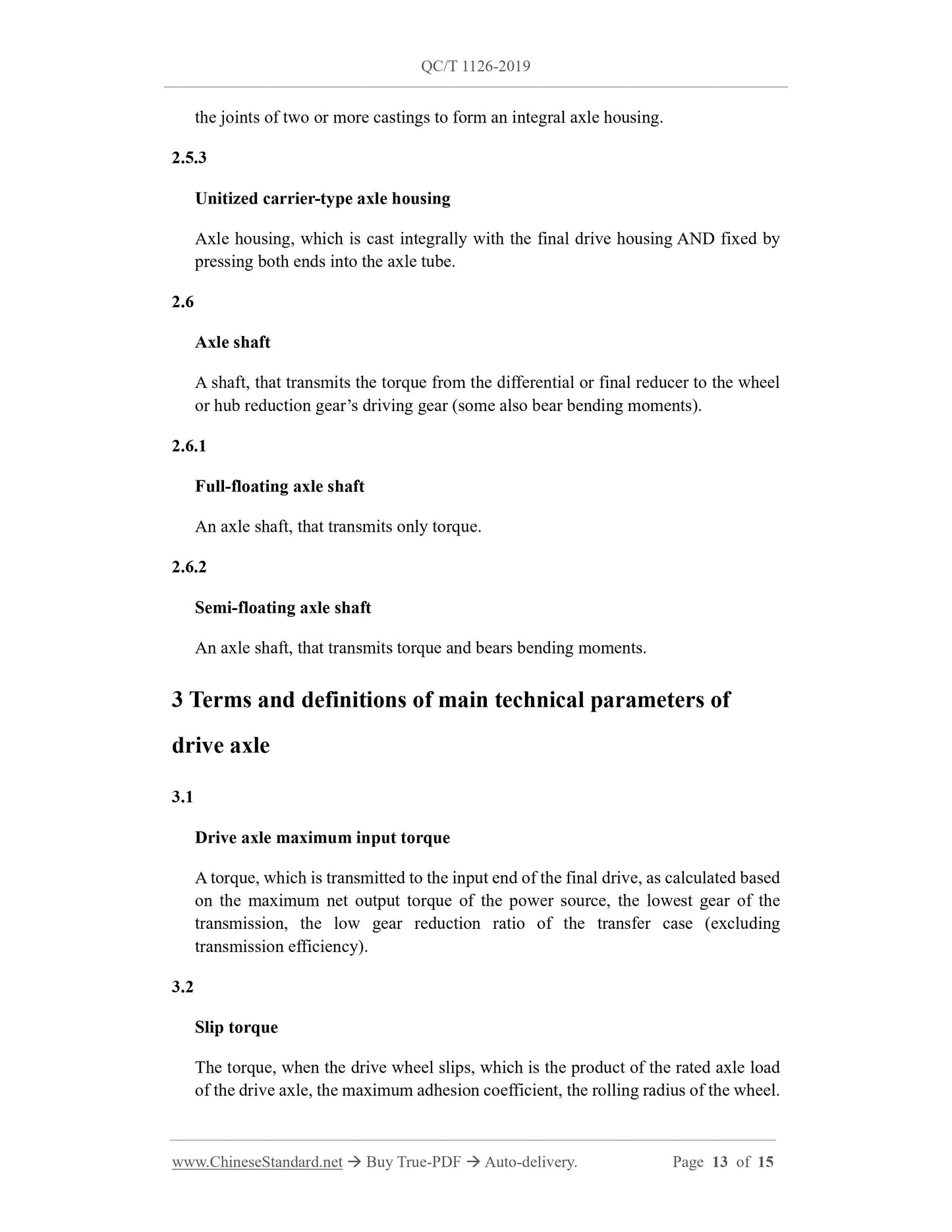1
/
of
6
www.ChineseStandard.us -- Field Test Asia Pte. Ltd.
QC/T 1126-2019 English PDF (QC/T1126-2019)
QC/T 1126-2019 English PDF (QC/T1126-2019)
Regular price
$220.00
Regular price
Sale price
$220.00
Unit price
/
per
Shipping calculated at checkout.
Couldn't load pickup availability
QC/T 1126-2019: Automotive drive axle terminology and definition
Delivery: 9 seconds. Download (and Email) true-PDF + Invoice.Get Quotation: Click QC/T 1126-2019 (Self-service in 1-minute)
Newer / historical versions: QC/T 1126-2019
Preview True-PDF
Scope
This standard specifies the terms and definitions of automotive drive axles.This standard applies to automotive drive axle assemblies and their main components.
Basic Data
| Standard ID | QC/T 1126-2019 (QC/T1126-2019) |
| Description (Translated English) | Automotive drive axle terminology and definition |
| Sector / Industry | Automobile and Vehicle Industry Standard (Recommended) |
| Classification of Chinese Standard | T21 |
| Classification of International Standard | 43.040.50 |
| Word Count Estimation | 13,124 |
| Date of Issue | 2019 |
| Date of Implementation | 2020-04-01 |
| Issuing agency(ies) | Ministry of Industry and Information Technology |
| Summary | This standard specifies the terms and definitions of vehicle drive axles. This standard applies to the vehicle drive axle assembly and its main components. |
Share
